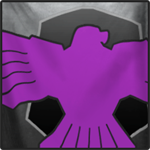 Kousagi, on 16 January 2013 - 10:45 PM, said:
Kousagi, on 16 January 2013 - 10:45 PM, said:
Every missile (LRM/SRM/SSRM) was guided on TT. The guidance was sort of crappy, which was why there were cluster hit tables and the base to-hit was the same for missiles and ballistics and lasers and PPCs. The only exception were Dead-fire missiles, which were cheaper, had worse cluster-hit modifiers, but had larger warheads that increased damage, and MRMs, which receive an additional penalty to acccuracy. The fluff rationale for why basic SRMs and LRMs didn't have better guidance was that they were designed specifically to resist electronic jamming. This lines up, logically, with why various types of ECM can jam the more sophisticated Narc, Artemis FCS, and Streak systems, which enhance missile accuracy (in the form of cluster-hit) substantially.
 Kousagi, on 16 January 2013 - 11:14 PM, said:
Kousagi, on 16 January 2013 - 11:14 PM, said:
@ Solis Obscuri, Yes TT visual was one of the only ways to see a ECM mech with any reliability. This how ever is where things get fuzzy in the rules vs canon. Since rules kinda break canon stuff some, or they just didn't care to go over how every single weapon in the game reacts in this situation, so its just a blanket rule. Though Yes, going inside the ECM umbrella did cut off your mechs C3, and if it was a angel it stopped the streak part of SSRM, LRM's don't lock on in TT, so does not matter.
As for ECM and Sensor Scans under Level 3 rules...
Quote
During the Spotting Phase. the gamemaster checks to see if any enemy unit is seen by an opposing unit.
To perform spotting, the gamemaster checks his map sheets after plotting the movement of the players' units. He first determines if the units can detect any enemy unit visually. Then he checks to see if they can detect any enemy unit by using sensors. The gamemaster then informs each player of the location, facing and type of any enemy unit detected.
Units that start a double-blind game using the Hidden Units rules (p.77, BMR) cannot be spotted except by the methods outlined in the standard game rules. If a hidden unit fires, it is spotted only if an enemy unit could have seen it under the visual spotting rules.
VISUAL SPOTTING
A unit visually detects an enemy unit whenever three conditions are met. First, the enemy unit must lie within the forward firing arc of the spotting unit. Second, the spotter must have a clear line of sight to the enemy unit. Third, the enemy unit must be within the visual range of the spotting unit. Use the Visual Range Table to determine maximum visual range under various
atmospheric conditions.
Vehicles with more than one crew member can spot in multiple firing arcs (see Vehicle Crews, p.28). Each additional crewmember beyond the first can spot in one additional firing arc, so that a vehicle with 4 or more crew members can spot in a 360 degree arc. Though infantry troops cannot see as far as BattleMechs or vehicles, they can serve as an excellent early warning system when properly deployed, because they offer the advantage of 360-degree spotting arcs.
SENSOR SPOTTING
Electronic sensors cover a wider field than most visual checks, but they can be fooled by the proper counter-measures. Electronic sensors operate in a 360-degree arc, regardless of the spotting unit's firing arc. All sensors, with the exception of seismic sensors, must have a line of sight to an enemy unit to detect it. The ranges of various BattleTech electronic sensor systems appear in the Sensor Range Table, p. 54.
To use a sensor, the player rolls 2D6. A result of 7 or 8 means the sensor detects any unit within its short range. A result of 5 or 6 means the sensor detects units out to its medium range. A result of 2 to 4 means the sensor detects units out to its long range. A roll of 9 to 12 means the sensor failed to detect any units. A spotting unit may use only one type of sensor per turn, and the controlling player must indicate this choice on the movement chart for that turn. (Note that the probe and sensor rules provided here apply in double-blind games only.)
Three enemy 'Mechs surround Natalie's Raven. Daylight fills the battlefield, and the Raven sees the first enemy 'Mech easily-the machine is within the Raven's forward firing arc, the Raven has a valid LOS and the enemy unit is only 14 hexes away, well within the Raven's 60-hex visual range. The second 'Mech lies 12 hexes away, within the Raven's LOS but in its left-side firing arc. The third lies in the Raven's rear firing arc, 19 hexes away, again within its LOS. The Raven mounts a Beagle active probe, which Natalie has activated for this turn, and so the gamemaster rolls 2D6 to determine if her Raven spots the remaining two "Mechs. The roll yields a result of 8, indicating that only units within short range are detected. This means that the Raven detects the second 'Mech, but not the third.
Vehicles have access to sensor systems similar to those used on 'Mechs, but in most cases these systems have shorter ranges, reflected in the Sensor Range Table. Infantry units do not have access to electronic sensors.
If seismic sensors are being used, any unit within range is spotted regardless of LOS. VTOLs cannot use seismic sensors, and they cannot be spotted by seismic sensors.
ECM SYSTEMS
Just as special sensors can make spottimg enemy units easier, special ECM systems can make units harder to detect. As a general rule, ECM systems mask a unit's nature and precise location from enemy sensors. but the systems' powerful jamming devices make it clear to the enemy that something is out there.
In the double-blind game, the Angel ECM suite, Guardian ECM suite and standard Clan ECM suites all modify the die roll results of spotting units attempting to detect an enemy unit equipped with such an ECM system. Because different ECM systems have different effects against different probes and sensors, the modifiers vary depending on the spotting unit's probe/sensor and the enemy unit's ECM system. These modifiers appear in the ECM Modifier Table.
To be affected, the spotting unit must be in the normal operating radius ofthe ECM system. This radius is not affected by LOS. If a spotting unit is within the range of multiple ECM systems, combine the effects of all the ECM systems.
Though ECM systems can prevent a sensor probe from identifying a unit, they also produce powerful. distinctive electromagnetic "signatures." If a spotting unit is in range of an active ECM device and fails to detect the ECM-equipped unit, inform the player that his unit has been jammed by an ECM suite.
The rules given here for each of the probes and ECM systems only apply in double-blind games. For general BattleTech rules governing the Guardian and Clan ECM suites and the Beagle active probe, see pages 122, 126-127 of the BattleTech Master Rules. For general rules and descriptions of the Bloodhound active probe, see Equipment, page 72.
(Maximum Tech, p.50-51)
So we are in effect, already limited to visual detection rules in MWO, since we can only detect and target enemies in our front arc FoV. If we could scan 360º for hidden enemy units, or enemy units obscured by weather conditions/darkness, having ECM jam those scans within it's 180m radius would line up with MaxTech rules... But as it stands we're already behaving as though an ECM was jamming our scanners, and MWO ECM now additionally prevents visual targeting and the relaying of spotted enemies to teammates out to over 4x the max range of ECM, as well as cutting off units from their team entirely while within the 180m "cloak" field. That's a ridiculous boost in power, compared to level 1, 2, or 3 rules for TT.

































